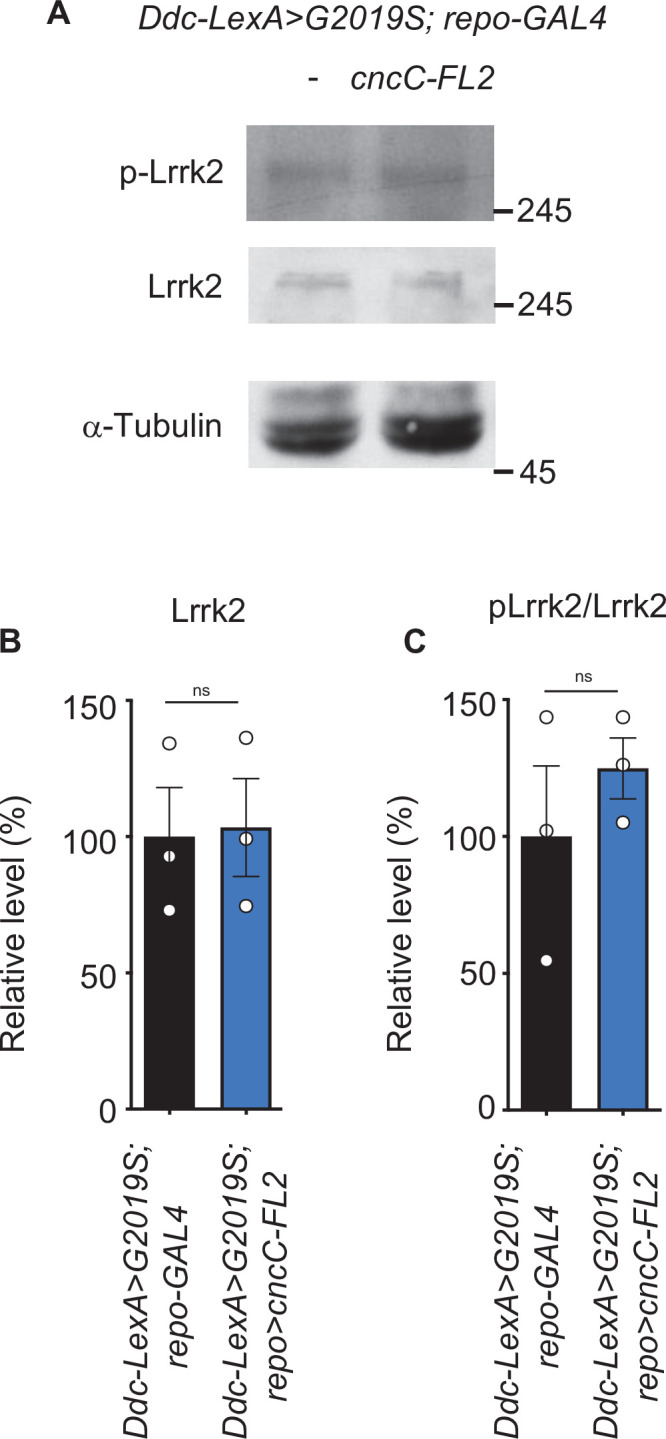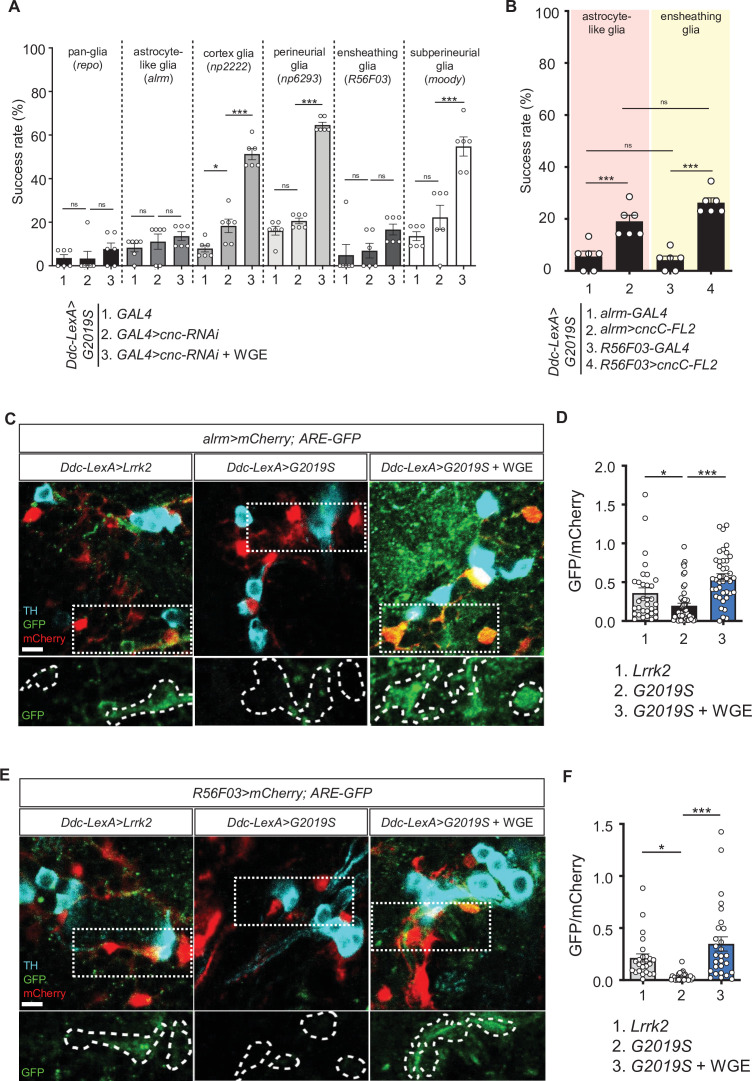Figure 6. Nrf2 in astrocyte-like and ensheathing glia mediates the effect of water extract of Gastrodia elata Blume (WGE) treatment in Ddc>G2019S flies.
(A) Nrf2 knockdown in astrocyte-like and ensheathing glia abolishes the improved locomotion elicited by WGE treatment in Ddc>G2019S flies. Composite bar graph shows climbing success rates for 6-week-old Ddc-LexA>G2019S flies with cnc-RNAi driven by repo-GAL4 in all glia, alrm-GAL4 in astrocyte-like glia, np2222 in cortex glia, np6293 in perineurial glia, R56F03 in ensheathing glia, and moody-GAL4 in subperineurial glia. (B) Composite bar graph shows climbing success rates (mean ± SEM, N = 6) for 6-week-old Ddc-LexA>G2019S flies with overexpression of Nrf2 in astrocyte-like glia (alrm>cncC-FL2) or ensheathing glia (R56F03>cncC-FL2). One-way ANOVA and Tukey’s post-hoc multiple comparison test (relative to Ddc-LexA>G2019S; GAL4>cnc-RNAi [A] or Ddc-LexA>G2019S; GAL4 [B]): *p<0.05, ***p<0.001, ns, not significant. (C, E) Representative images showing expression of ARE-GFP in astrocyte-like glia (alrm>mCherry) (C) and ensheathing glia (R56F03>mCherry) (E), together with TH-positive dopaminergic neurons in the PPL1 clusters of 6-week-old Ddc-LexA>Lrrk2, Ddc-LexA>G2019S, or WGE (0.1% w/w)-fed Ddc-LexA>G2019S flies. Bar: 5 μm. GFP channels in the dashed boxes are shown as enhanced views in the lower panel, with glial signals labeled by dashed lines. (D, F) Quantifications (mean ± SEM, n > 25 for each genotype) of GFP intensities in astrocyte-like glia (D) or ensheathing glia (F). GFP intensities in glia have been outlined manually using the mCherry-positive signals. One-way ANOVA and Tukey’s post-hoc multiple comparison test (relative to Ddc-LexA>G2019S; alrm>mCherry [D] or Ddc-LexA>G2019S; R56F03>mCherry [F]): *p<0.05, ***p<0.001, ns, not significant.
Figure 6—figure supplement 1. Lrrk2 and pLrrk2 levels are maintained upon glial Nrf2 overexpression.



